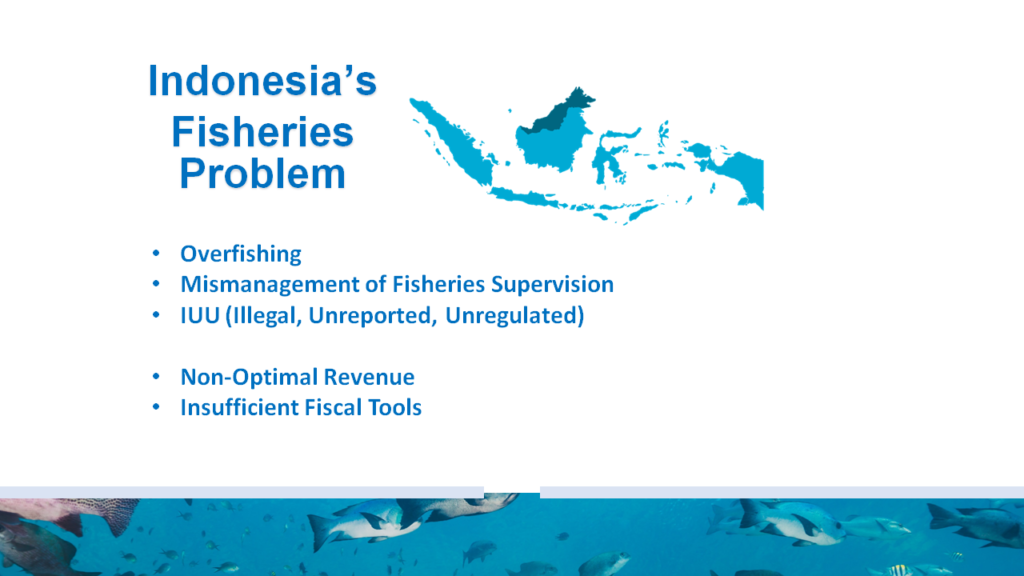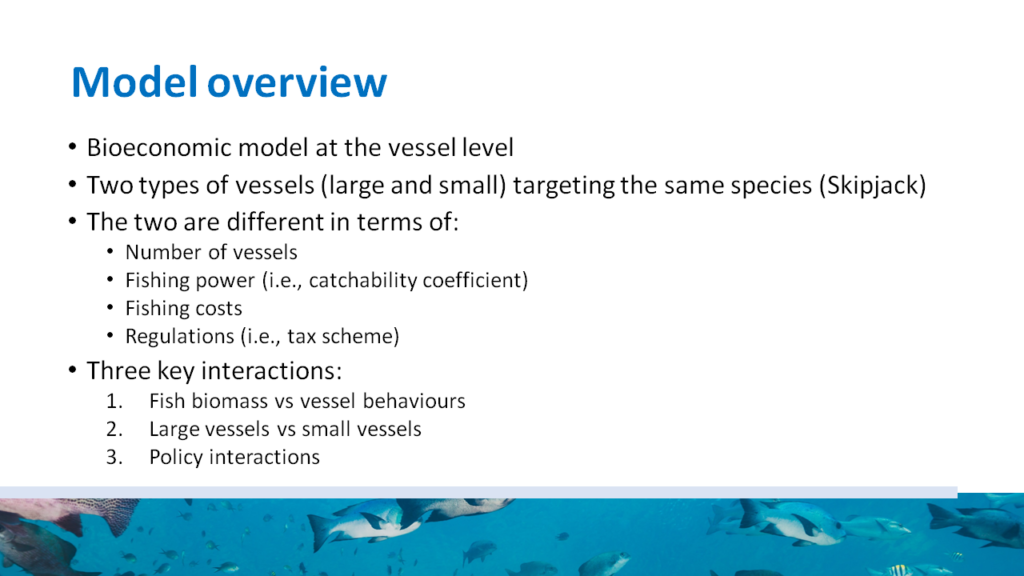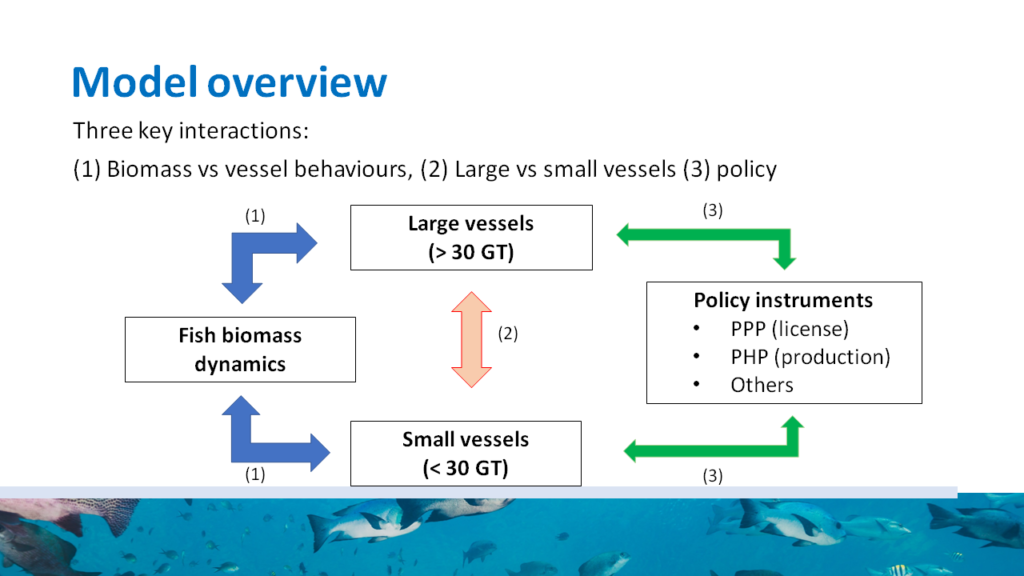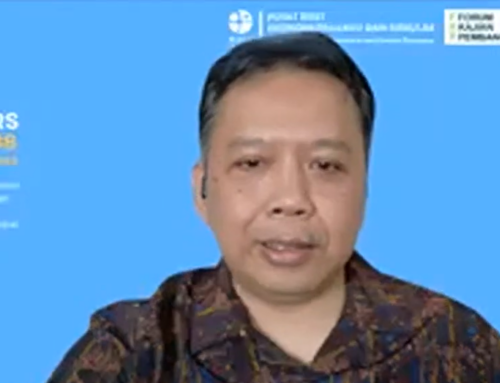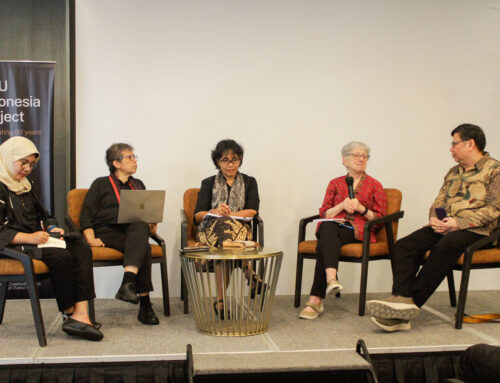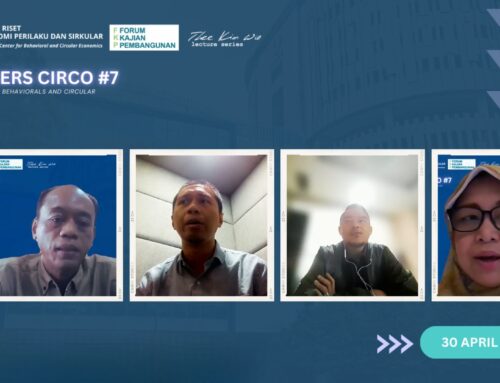Amongst the many problems faced by the fisheries sector in Indonesia are non-optimal revenues from fisheries and insufficient fiscal tools. This is doubly unfortunate since if designed properly, fiscal instruments can be powerful to change behavior towards a more sustainable resource extraction path and contribute to optimal government and fisher revenues. How can fisheries tax promote sustainable fisheries management in Indonesia? Alin Halimatussadiah (LPEM FEB UI) and Satoshi Yamazaki (The University of Tasmania) presented their study of this issue on the FKP webinar on 19 May 2020.
Imposing the right tax scheme will not only reduce unsustainable practice in fishery harvesting but also increase government revenue. In 2018 for example, the fishery sector contributed 2.29% to Indonesia GDP but only generated 0.22% of the total government revenues (Pungutan Negara Bukan Pajak or PNBP) which can be considered low compared to other extractive sector such as forestry (0.60% of GDP and 1.51% of PNBP) and coal mining (2.26% of GDP and 6.48% of PNBP). Even though in the Indonesian tax system PNBP is not administratively considered as ‘tax’, in this study, PNBP is considered tax. Currently, fishery-related taxes (i.e. fishery-related PNBP) are only imposed to large vessels (more than 30 gross ton/GT). To examine the current fishery-related taxes and assess whether they could be more optimal, the researchers developed simulations on two kinds of taxes: a license tax and a production tax on fisheries. A license taxed is imposed on each vessel based on their size (gross tonnage) whereas a production tax is imposed on the fish catch based on the catch and fish price.
To assess the impacts of the license and production taxes on the fishing effort of both large and small vessels, researchers constructed a bioeconomic model at the vessel level. A bioeconomic model combines fisheries population biology information and economic information such as costs and revenues. Bioeconomic modeling in fisheries is challenging in general, and in Indonesia it is even more challenging given lack of data on fisheries biomass dynamics and data on vessel behavior. Despite these challenges, the researchers have constructed a bioeconomic model for the Indonesian skipjack fisheries (a type of tuna known in Indonesia as ikan cakalang) and use it to compare the impacts of several tax scenarios to a number of outcome variables i.e. share of harvest of small vessels, distribution of fishery profits, tax revenue generated, and fish biomass.
There were several interesting findings based on the simulation. First, taxing only large vessel will not increase biomass. It seems imposing production tax on both large and small vessels is the best policy combination especially if the goal is increasing both biomass and tax revenues. Secondly, In order to set the production tax, the government should include the vessel profitability into consideration, especially for small vessels because they are more responsive to the tax.
During the Q&A session, it was suggested that the researchers consider the impacts of an ad valorem tax, i.e. a tax that is applied equally to each gross tonnage of fishing vessel capacity, regardless of the vessel size.
Please refer to the video and slides for this webinar available from the sidebar for details of the presentation.
